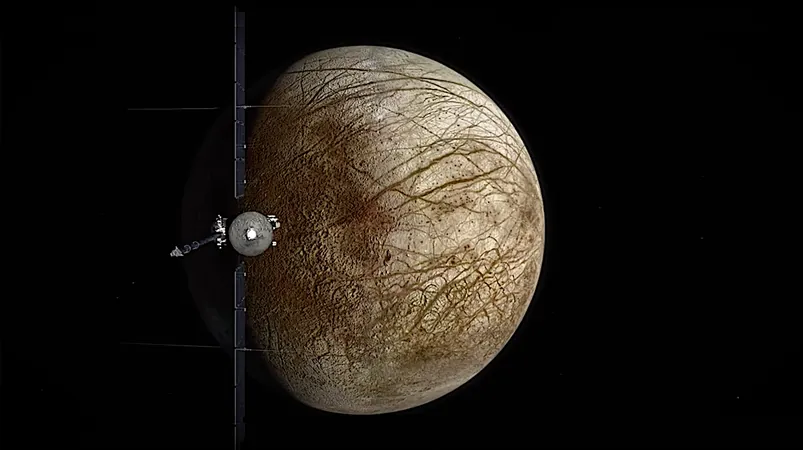
Navigating the Risks: Planetary Protection Strategies for the Europa Clipper Mission
2024-11-01
Author: Arjun
Introduction
As humanity gears up for its ambitious Europa Clipper mission to explore the enigmatic moon of Jupiter, Europa, safeguarding it from Earth's biological contamination remains a top priority. The mission's primary objective is to investigate whether Europa harbors the potential for life, given its subsurface ocean believed to be rich in liquid water.
Planetary Protection Requirements
In accordance with NASA's stringent Planetary Protection (PP) requirements outlined in the NASA Procedural Requirement (NPR) 8020.12D, the mission must ensure that the likelihood of inadvertently introducing Earth-based microorganisms into Europa's ocean is less than 0.0001 (1 × 10⁻⁴) per mission. This standard underscores the critical nature of avoiding contamination, given that even a single viable terrestrial microorganism could have unforeseen consequences in this pristine environment.
Probabilistic Risk Assessment
To achieve compliance with these requirements, the Europa Clipper team at NASA's Jet Propulsion Laboratory has crafted a comprehensive end-to-end probabilistic risk assessment (PRA). This innovative approach provides a thorough evaluation of the unlikely but possible events that could lead to the contamination of Europa. It goes beyond merely quantifying risks; it also informs essential design decisions throughout the mission's development.
Key Factors in the PRA
Key factors in this PRA include the assessment of spacecraft failure scenarios, the potential for those failures to result in an impact with Europa, and the geological processes at play that could introduce Earth DNA into the moon's subsurface liquid. Additionally, the team evaluates the survivability of microorganisms throughout the spacecraft's journey from Earth to Jupiter and the icy moon.
Significance of the Probabilistic Assessment
The significance of this probabilistic assessment can't be overstated. Previous methodologies fell short, leading to either overly cautious or inadequate sterilization procedures that increased risks to both the mission and the exploration target. Should hardware sterilization alone be the chosen method for complying with the PP requirements, the PRA indicates a daunting 13-log reduction in microbial bioburden would be essential before launch. However, achieving such comprehensive sterilization could compromise the functionality of sensitive spaceflight electronics and optics.
A Shift in Approach
Instead of seeking to demonstrate sterility in the event of a contamination scenario, the Europa Clipper Project aims to show that the probability of impacting and contaminating Europa is acceptably low. This shift in focus represents a significant advancement over traditional models, introducing a more interrelated and mathematically sound framework for assessing the risks of biological contamination during space exploration.
Implications for Future Missions
This new methodology and its findings will not only set a precedent for the Europa Clipper mission but will also lay groundwork for future missions needing to implement similar planetary protection protocols, such as the upcoming Europa Lander and Mars Sample Return missions.
Conclusion
In conclusion, the Europa Clipper mission stands at the forefront of our quest to understand the cosmos, but it comes with the immense responsibility of protecting alien worlds from our own microbial presence. As this mission progresses, it propels us closer to answering the age-old question: Are we alone in the universe? The results and insights from the ongoing risk assessments will surely shape our approach to future explorations beyond our home planet. Stay tuned for developments as this groundbreaking mission unfolds!

 Brasil (PT)
Brasil (PT)
 Canada (EN)
Canada (EN)
 Chile (ES)
Chile (ES)
 España (ES)
España (ES)
 France (FR)
France (FR)
 Hong Kong (EN)
Hong Kong (EN)
 Italia (IT)
Italia (IT)
 日本 (JA)
日本 (JA)
 Magyarország (HU)
Magyarország (HU)
 Norge (NO)
Norge (NO)
 Polska (PL)
Polska (PL)
 Schweiz (DE)
Schweiz (DE)
 Singapore (EN)
Singapore (EN)
 Sverige (SV)
Sverige (SV)
 Suomi (FI)
Suomi (FI)
 Türkiye (TR)
Türkiye (TR)